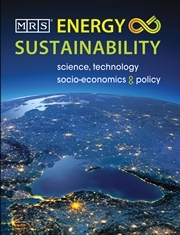Article contents
Transforming the global energy system is required to avoid the sixth mass extinction
Published online by Cambridge University Press: 15 September 2015
Abstract

This study argues that the climate changes resulting from the continued burning of fossil fuels at present rates will very likely initiate extinction of many terrestrial and marine species, beginning by mid-century. Under this scenario, interactions of climate change with other well-known extinction threats promise to trigger a loss of life that has not been seen since an asteroid-strike eliminated most dinosaurs 66 million years ago. Avoiding this will require a very rapid shift of both our stationary and transportation energy sectors to carbon-neutral systems.
Mass extinctions, which result in loss of at least an estimated 75% of known species over a geologically short time period, are very rare in the 540 million year history of complex life on Earth. Only five have been recognized, the most recent of which occurred 66 million years ago, ending the reign of dinosaurs and opening the door for domination of the planet eventually by humans, who have now accelerated biodiversity loss to the extent that a Sixth Mass Extinction is plausible. Accelerated extinction rates up to now primarily have been due to human-caused habitat destruction and overexploitation of economically valuable species. Climate change caused by burning of fossil fuels adds a new and critically problematic extinction driver because the pace and magnitude of change exceeds what many species have experienced in their evolutionary history, and rapid climate change multiplies the already-existing threats. Particularly at risk are regions that contain most of the world's species, such as rainforest and coral reef ecosystems. Avoiding severe losses that would commit many species to extinction by 2100 will require transforming global energy systems to carbon-neutral ones by 2050. Currently, the transformation is occurring too slowly to avoid worst-case extinction scenarios.
Keywords
Information
- Type
- Review
- Information
- Copyright
- Copyright © Materials Research Society 2015
References
REFERENCES
- 20
- Cited by

